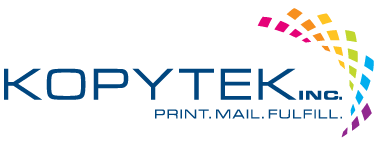7 Tips on how to prepare your files for commercial printing
Many commercial print projects require printing options that you don’t have on your desktop printer; you can take your publication to a commercial printer to reproduce your work on an offset printing press or a high-quality digital printer.
For example, you may want to print a publication in larger quantities, on special paper (such as vellum or card stock), or use binding, trimming, and finishing options.
If you need hundreds or even thousands of copies, a commercial printer is the most economical and efficient way to print your publication.
Listed here are a few tips to help you make your commercial printing project a success:
In the article
- Tip 1: Discuss your project with your commercial printer
- Tip 2: Choose your color model early
- Tip 3: Make sure your publication pages are the correct size
- Tip 4: Allow for bleeds
- Tip 5: Avoid using synthetic font styles
- Tip 6: Avoid using tints for text at small font sizes
- Tip 7: Size digital photos and scanned images appropriately
Tip 1: Discuss the project with a commercial printer (The “In the article section” and actual tip headlines should be the same throughout)
Consult with your commercial printer before and during the design process to save time and money later. Before you start your project, describe your project, your goals, and find out your printer’s requirements.
Prior to creating your publication, discuss the following:
- Ask what type of files your publisher accepts. If you can’t locate a commercial printer who does (?), you can ask about other ways to submit your publication for printing. Most commercial printers accept PostScript files or PDF files, and will provide instructions on how to create these files from your publication.
- Tell the printer about your project’s printing needs, such as quantity, quality, paper stock, paper size, recommended color model, binding, folding, trimming, budget, file size limitations, and deadlines. Always ask if the printer has the items that you want in stock.
- Let the printer know whether your publication will include scanned pictures, and if so, whether you will scan them yourself or have a commercial printer or service bureau scan them.
- Ask whether there will be any pre-press tasks, such as trapping and page imposition.
- Ask for any recommendations that can save you money.
Tip 2: Choose a color model early
Before you spend a lot of time designing your publication, decide whether you want to print your publication in color. If you print your publication to a high-quality digital color printer, you don’t need to worry about color. Digital color printers accurately reproduce millions of colors. If you plan to print your publication on an offset printing press, you have several color-model options.
Offset printing requires that a professional press operator setup and run the print job. Generally, every ink that is needed to print the publication requires more setup for the operator and increases the cost. The number of inks that you need depends on the color model that you choose.
When you set up color printing for your publication, you can choose from the following color models:
- Any color (RGB)
- Single color
- Spot colors
- Process colors (CMYK)
- Process plus spot colors
Any color (RGB)
If you print by using a digital color printer (such as a color desktop printer), you use the Red, Green, Blue (RGB) color model. When you print a few copies, this is the least expensive color model to print. RGB colors have the highest degree of variability of any color model, however, which makes it difficult to match colors between print jobs.
Single color
If you print by using one color, everything in your publication is printed as a tint of a single ink, which is usually black. This is the least expensive color model to print on an offset press because it requires only one ink.
Spot colors
If you print by using a spot color, everything in your publication is printed as a tint of a single ink — usually black — and a tint of one additional color, the spot color, which is usually used as an accent. Publisher uses PANTONE® colors for spot color jobs.
This color model requires a minimum of two inks and can increase the cost of printing on an offset press with each ink that you add.
In some cases, printing spot colors may be more expensive than using process colors. This is commonly the case for short-run jobs.
Process-colors (CMYK)
If you use this color model, your publication is printed in full color by combining varying percentages of the process-color inks cyan, magenta, yellow, and black(CMYK). Although you can combine these four inks to get (thousands? millions?) of colors, some colors cannot be made. For example, the CMYK color model cannot produce metallic or highly-saturated colors.
Process-color printing always requires setting up the press with the four CMYK inks. It also requires skill on the part of the press operator to line up the impression of one ink with that of the others, which is called registration. These requirements make process-color printing more expensive than spot-color printing.
Process plus spot colors
This color model is the most expensive to print because it combines process-color printing (four inks) with one or more spot-color inks. You use this color model only if you want both full color plus a highly saturated or metallic color that cannot be produced by using CMYK.
Tip 3: Make sure that your publication pages are the correct size
Before you create your publication, you should decide what size you want the finished product to be. Be sure to consult your commercial printing service.
It is important to note that in page setup and printing, page size and paper size are two different things:
- Page size always refers to the size of the finished page, after trimming.
- Paper size always refers to the size of the sheet of paper on which you print the publication, before trimming.
- In many cases, the paper size needs to be larger than the page size to allow for a bleed and printer’s marks. It also enables you to print more than one page per sheet of paper.
Business card, index card, and postcard sizes If you want to print several small items, like business cards, on a single letter-sized (8.5 inches x 11 inches) sheet, set your publication page size to be the size of the cards (2 inches x 3.5 inches for business cards), not the size of the paper that you will print them on.
Folded brochure sizes If your publication is a single sheet of paper that will be folded one or more times, such as a tri-fold brochure or a greeting card, the page size should be the same as the finished size before you fold it(kind of confusing, any ideas?). You should not consider each panel of the brochure to be a separate page.
Booklet sizes If your publication is a booklet with multiple folded pages (for example, a catalog or magazine), the page size should be the same as a single page after the piece has been folded. For example, if your publication page size is 5.5 inches x 8.5 inches, you can print these pages side-by-side on both sides of a single letter-sized sheet of paper.
Complex imposition Some imposition can involve a large number of pages that are printed on a single sheet, which is then folded several times and trimmed on three sides to produce a group of sequentially numbered pages. This kind of imposition can be done only by using a third-party imposition program.
Tip 4: Allow for bleeds
If you have elements in your publication that you want to print to the edge of the page, set these up as bleeds. A bleed is where the element extends off the publication page. The publication is printed to a paper size that is larger than the finished page size and then trimmed. Bleeds are necessary because most printing devices, including offset printing presses, cannot print to the edge of the paper, and trimming the paper may leave a thin, white, unprinted edge.
Tip 5: Avoid using synthetic font styles
Typefaces are typically designed with different fonts to represent variations in the typeface. For example, the typeface Times New Roman is actually four fonts:
- Times New Roman
- Times New Roman Bold
- Times New Roman Italic
- Times New Roman Bold Italic
Many typefaces do not have separate fonts to represent bold and italic. When you apply bold or italic formatting to these fonts, some programs create a synthetic version of the typeface in that style. For example, the typeface Comic Sans MS does not have an italic font version. When you apply italic formatting to text in Comic Sans MS, Windows makes the text look italic by slanting the characters.
Most desktop printers producesynthetic font styles as expected, but high-end print devices, such as imagesetters, usually do not. Make sure that you donot have any synthetic font styles in your publication when you hand it off to your commercial printer.
Check for the separate fonts that you want to print
To be sure that you don’t have any synthetic font styles, you need to know what typefaces you are using and what variations are available as separate fonts. To see what typefaces you have used in your publication, do the following:
If a typeface is listed with only one variation, no separate fonts are available for bold, italic, or bold italic formatting. Most of the typefaces that have only one font available are decorative fonts and are not designed to be used in other variations.
Tip 6: Avoid using tints for text at small font sizes
If colored text is at a small font size, use colors that are solid spot color inks or colors that can be made up with a combination of solid process-color inks. Avoid using a tint of a color.
Publisher prints tints as a screen, or percentage, of a solid ink color. When viewed close-up, the screen appears as a pattern of dots. For example, a 50 percent tint of green is printed as a 50 percent screen of the solid green ink.
When the tinted text is at a small font size, the dots that make up the screen may be insufficient to clearly define the shape of the characters. The resulting text is blurred or speckled and hard to read. If the tint is a process color (using multiple inks), registration of the inks may be imperfectly aligned, which can add a fuzzy edge to the text.
If you want to color text at small font sizes, make sure that you use colors that will be printed as solid inks, not tints. The following are some possible color choices:
- Black
- White
- Cyan
- Magenta
- Yellow
- Red (100 percent Magenta, 100 percent Yellow)
- Green (100 percent Cyan, 100 percent Yellow)
- Blue (100 percent Cyan, 100 percent Red)
- 100 percent tint of any spot color
For text at larger font sizes, roughly 18 points and larger, tints are not a problem. Be sure to discuss the fonts that you want to tint with your commercial printer.
Tip 7: Size digital photos and scanned images appropriately
Graphics that are created by a paint program, a scanning program, or a digital camera are made up of a grid of differently colored squares called pixels. The more pixels a graphic has, the more detail it shows.
The resolution of a picture is expressed in pixels per inch (ppi). Every picture has a finite number of pixels. Scaling a picture larger decreases the resolution (fewer ppi). Scaling the picture smaller increases the resolution (more ppi).
If your picture resolution is too low, it will be printed more blocky (different word?). If the picture resolution is too high, the file size of the publication becomes unnecessarily large, and it takes a longer time to open, edit, and be printed. Pictures with more than 1,000 ppi may not be printed at all.
If the resolution of the picture is greater than what the printer is able to print (for example, an 800-ppi picture on a 300-ppi printer), the printer takes more time to process the image data without showing any more detail in the printed piece. Try to match the picture resolution to the resolution of the printer.
Color pictures that you plan to have printed by a commercial printer should be between 200 and 300 ppi. Your pictures can have higher resolution — up to 800 ppi — but they should not have a lower resolution.
Note: You sometimes may see picture resolution expressed as dots per inch (dpi) instead of ppi. These terms are often used interchangeably.
Effective resolution
A picture contains the same amount of information whether you scale it larger or smaller in your publication. If you want more details in your picture to appear as you enlarge it, you need to start with a picture that has a higher effective resolution.
Every picture in your publication has an effective resolution that takes into account the original resolution of the graphic and the effect of scaling it in a program. For example, a picture with an original resolution of 300 ppi that has been scaled 200 percent larger has an effective resolution of 150 ppi.
Reducing high-resolution graphics
If you have just a few graphics whose resolution is too high, you may have no problem printing them. If you have several high-resolution graphics, your publication will be printed more efficiently if you reduce their resolutions.






